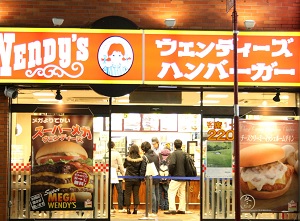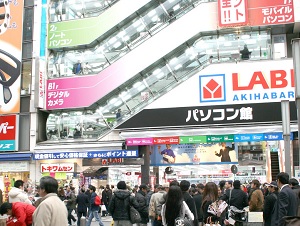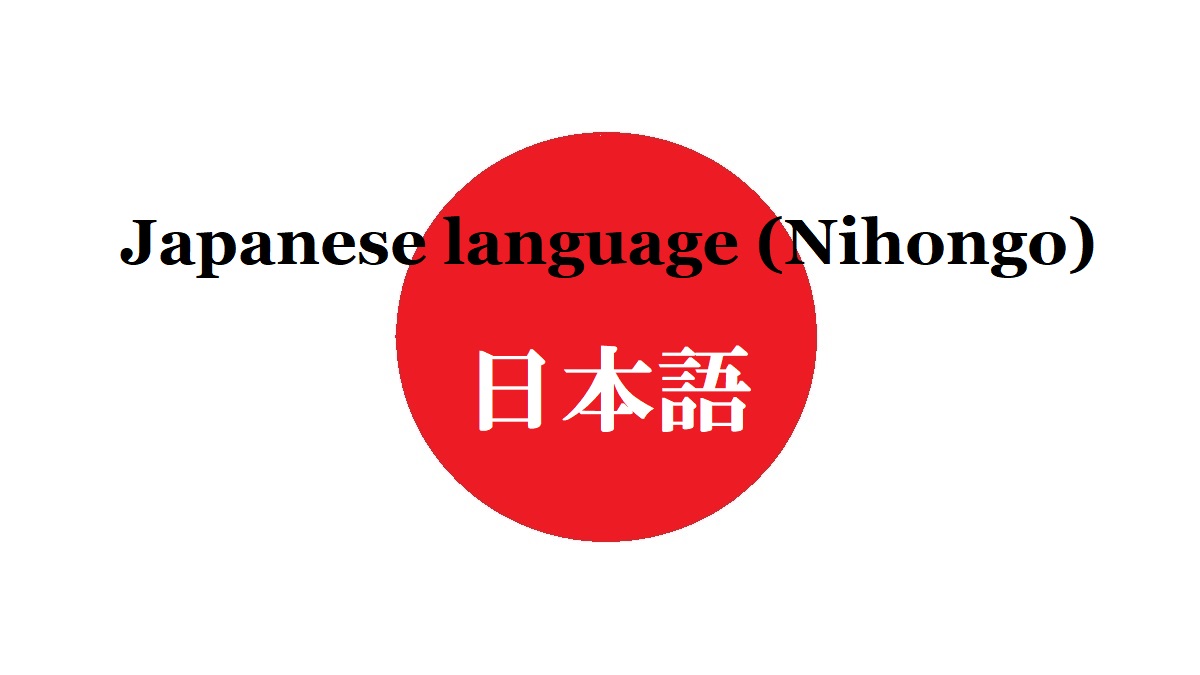Katakana characters

Many Katakana characters are used for the signs.
Katakana is a character set for Japanese, but it is the special character set.
It is mainly used for notation of foreign words.
Japanese has absorbed a lot of foreign words since ancient times.
The words from ancient China are written in Kanji character.
On the other hand, the words from Western languages using alphabet are written in this Katakana.
In the 16th and 17th centuries, Portugal and Netherlands came to Japan for searching new colony or trading.
At that time, many new words of advanced European things are imported to Japanese.
In the 19th century, when Japan became a modern nation, the words about medical science and philosophy were imported from Germany and the words about art were imported from France.
From the 20th century until now, a lot of English words in various genres have been imported to Japanese.
Until the middle of the 20th century, many Japanese words of Kanji characters corresponding to new Western words were created.
But after WW2, increasing foreign words were too much to create new Japanese words.
Therefore, they have been written by Katakana as detectable by Japanese ear.
For example, telephone became common in the 20th century.
Japanese created a word “denwa” for the telephone.
“Den” means "electricity" and “wa” means "talk".
“Internet”, “blog”, etc. are used in this century, but they have no Japanese word.
They are written in only Katakana.
In addition to this, Katakana is used as follows.
- Foreign country name and place name
- Name of foreigner
- Name of organisms and mineral
- Expression of noise and animal call
About the names of animals, plants and mineral familiar to us, they are written rather by Kanji and Hiragana.
But when we write about them as biological topic, they are written by Katakana.
Table of Katakana
The following tables include all Katakana characters.
As you can see, all Katakana characters correspond to Japanese syllable like Hiragana.
(Please read the page of Pronunciation of Japanese language.
The orange-colored and green-colored parts are the syllables that the pronunciation has been changed for a long time.)
| a ア |
i イ |
u ウ |
e エ |
o オ |
||||
| ka カ |
ki キ |
ku ク |
ke ケ |
ko コ |
kya キャ |
kyu キョ |
kyo キョ |
|
| sa サ |
shi シ |
su ス |
se セ |
so ソ |
sha シャ |
shu シュ |
sho ショ |
|
| ta タ |
chi チ |
tsu ツ |
te テ |
to ト |
cha チャ |
chu チュ |
cho チョ |
|
| na ナ |
ni ニ |
nu ヌ |
ne ネ |
no ノ |
nya ニャ |
nyu ニュ |
nyo ニョ |
|
| ha ハ |
hi ヒ |
fu フ |
he ヘ |
ho ホ |
hya ヒャ |
hyu ヒュ |
hyo ヒョ |
|
| ma マ |
mi ミ |
mu ム |
me メ |
mo モ |
mya ミャ |
myu ミュ |
myo ミョ |
|
| ya ヤ |
(i) (イ) |
yu ユ |
(e) (エ) |
yo ヨ |
||||
| ra ラ |
ri リ |
ru ル |
re レ |
ro ロ |
rya リャ |
ryu リュ |
ryo リョ |
|
| wa ワ |
(i) (イ) |
(u) (ウ) |
(e) (エ) |
o ヲ |
||||
| n ン |
| ga ガ |
gi ギ |
gu グ |
ge ゲ |
go ゴ |
gya ギャ |
gyu ギュ |
gyo ギョ |
|
| za ザ |
ji ジ |
zu ズ |
ze ゼ |
zo ゾ |
ja ジャ |
ju ジュ |
jo ジョ |
|
| da ダ |
ji ヂ |
zu ヅ |
de デ |
do ド |
ja ヂャ |
ju ヂュ |
jo ヂョ |
|
| ba バ |
bi ビ |
bu ブ |
be ベ |
bo ボ |
bya ビャ |
byu ビュ |
byo ビョ |
|
| pa パ |
pi ピ |
pu プ |
pe ペ |
po ポ |
pya ピャ |
pyu ピュ |
pyo ピョ |
Basically, Katakana is written as detectable sounds by Japanese ear.
Therefore, we must write even the sounds which are not in Japanese.
For the purpose, some combinations of Katakana are prepared.
The below table includes such characters.
| la ラ |
li リ |
lu ル |
le レ |
lo ロ |
| fa ファ |
fi フィ |
fu フ |
fe フェ |
fo フォ |
| va バ ヴァ |
vi ビ ヴィ |
vu ブ ヴ |
ve ベ ヴェ |
vo ボ ヴォ |
| ya ヤ |
yi イ |
yu ユ |
ye イェ |
yo ヨ |
| wa ワ |
wi ウィ |
wu ウ |
we ウェ |
wo ウォ |
| si スィ |
she シェ |
|||
| zi ズィ |
je ジェ |
|||
| ti ティ |
tu トゥ |
che チェ |
||
| di ディ |
du ドゥ |
There is not "l" sound in Japanese.
So, it is written using "r" sound.
"Long" and "wrong" are the same in the notation of Japanese.
And, there are special characters for "v" sound.
But the characters with "b" sound are more often used than such characters.
Details of Katakana

Akihabara in Tokyo is a big electronics quarter.
So you can find many Katakana characters in the town.
Katakana was created in ancient times by taking a part of a Kanji character with similar Chinese sound were selected.
Therefore, the form of character is rectilinear and angular.
It is assumed that Katakana was formed around the 12th century.
It had been used mainly for the marks to read Chinese writing.
Current use of Katakana was fixed in the middle of the 20th century.
Katakana is a character set different from Hiragana, so you must learn this as an unique character set.
About long vowel, the bar character like a hyphen is written just after the vowel which is pronounced long.
But, Japanese can be written vertically.
At that time, the bar character is written vertically.
The followings are the examples of the word written in Katanaka.
news = nyûsu = ニュース
internet = intânetto = インターネット
elevator = erebêtâ = エレベーター
violin = baiorin / vaiorin = バイオリン / ヴァイオリン
Because foreign words are long when they are written in katakana, Japanese people shorten the words which are often used in the life.
smartphone = sumâtohon > sumaho = スマホ
supermarket = sûpâmâketto > sûpâ = スーパー
convenience store = konbiniensu sutoâ > konbini = コンビニ
personal computer = pâsonaru konpyûtâ > pasokon = パソコン
By the way, the name of countries are basically written in Katakana.
But many of them are different from the original names.
USA, America : Amerika = アメリカ
Great Britain : Igirisu = イギリス [from "English"]
France : Furansu = フランス
Germany : Doitsu = ドイツ [from "Deutschland" in Germany]
Italy : Itaria = イタリア
Spain : Supein = スペイン
Switzerland : Suisu = スイス [from "Swiss"]
The Netherlands : Oranda = オランダ [from "Holland"]
Australia : Ôsutoraria = オーストラリア
New Zealand : Nyûjîrando = ニュージーランド
The Philippines : Firipin = フィリピン
Vietnam : Betonamu = ベトナム
Thailand : Tai = タイ
Indonesia : Indoneshia = インドネシア
Malaysia : Marêshia = マレーシア
Singapore : Shingapôru = シンガポール
India : Indo = インド
Russia : Roshia = ロシア
The name of countries near Japan are written in Kanji characters.
China : Chûgoku = 中国
Taiwan : Taiwan = 台湾
Hong Kong : Honkon = 香港
South Korea : Kankoku = 韓国
North Korea : Kita-Chôsen = 北朝鮮


